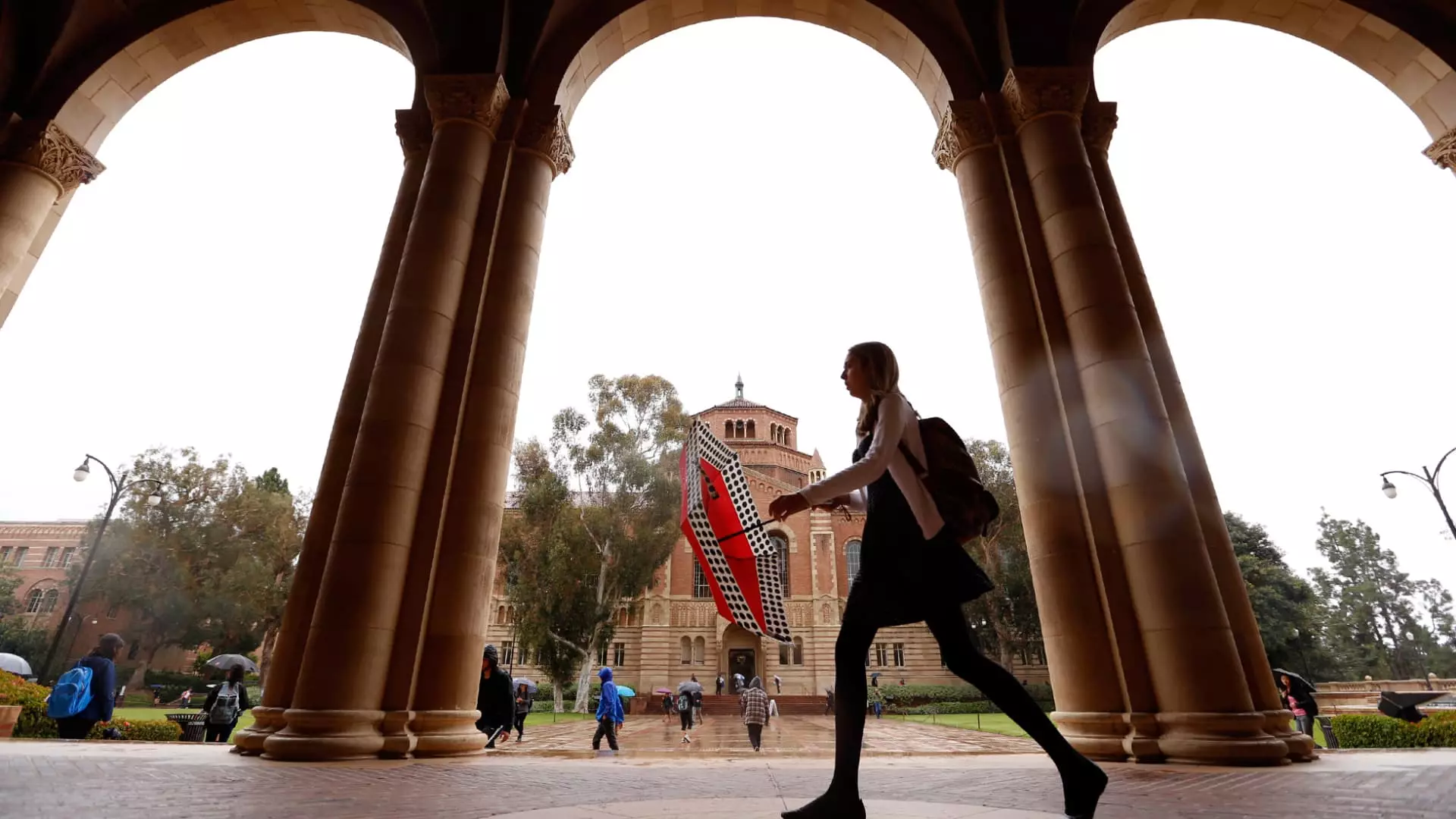In recent years, despite an increase in the number of students qualifying for federal financial aid, there has been a noticeable decline in the pursuit of four-year degrees among high school graduates in the United States. This trend raises numerous questions about the future of higher education and the sustainability of traditional pathways to success. For many students, the escalating costs associated with college education are becoming prohibitive, leading to a scenario where only those from affluent backgrounds can consider the full four-year experience. According to a recent report by the National Student Clearinghouse Research Center, new first-year student enrollment has dropped by 5% this fall compared to the previous year. This alarming statistic marks the first decline in enrollment figures since the onset of the COVID-19 pandemic, as noted by Doug Shapiro, the institute’s executive director.
As the federal government has expanded the Free Application for Federal Student Aid (FAFSA) to make Pell Grant eligibility more inclusive, one might expect that this would counteract the decline in enrollment. However, the reality is more complex, indicating deeper systemic issues within the financial aid structure as well as the college landscape itself.
The data shows that the decrease in freshman enrollment is particularly pronounced at four-year institutions that primarily serve low-income students, with more than a 10% drop in enrollment reported in certain cases. The intention behind the changes implemented in the FAFSA was to enhance access to financial support for low- and middle-income families. New data indicates that the number of students eligible for Pell Grants has increased by 10%, including a 3% rise among current high school seniors. Yet, despite these changes, the overall number of Pell Grant recipients has declined sharply over recent years. This contradiction is troubling and suggests that the growing number of eligible students is not translating into actionable enrollment.
One major issue contributing to this decline is the persistent rise in college costs, which significantly outstrip the financial support provided through Pell Grants. The maximum award has seen only incremental increases, amounting to $7,395 for the 2023-24 academic year. In contrast, the average cost of attending a private four-year college has risen to approximately $58,600, while in-state public colleges charge about $24,920. These figures reveal a stark reality: as financial aid remains stagnated in the face of rising educational costs, many prospective students—particularly those from economically disadvantaged backgrounds—may feel as though a degree is simply unattainable.
Another critical facet of this issue lies within the changing landscape of the FAFSA. Originally designed to simplify the financial aid process, many students have expressed frustration with its execution, leading to an increased likelihood of opting out of college altogether. A recent survey found that 45% of college applicants experienced difficulties with the FAFSA, with some ultimately opting for community college or vocational training instead of traditional four-year institutions. The chaos surrounding the FAFSA reforms is revealing a disconnect between policy intentions and actual outcomes, leaving many students disillusioned with the possibilities available to them in higher education.
This sentiment of skepticism extends beyond financial aid frustrations. As students consider the implications of rising tuition fees and growing student debt—now exceeding $1.7 trillion—the perceived return on investment for traditional four-year degrees is increasingly called into question. Jamie Beaton, CEO of a college consulting firm, has pointed out that there is rampant unease surrounding the genuine value of obtaining a degree, prompting students to reconsider their educational paths.
In lieu of pursuing traditional degrees, more students are gravitating toward shorter-term certification programs, which have witnessed a remarkable 7.3% increase in enrollment. With the labor market evolving and many employers prioritizing practical skills over formal degrees, vocational training and certificate programs are becoming increasingly attractive options for those looking to enter the workforce without the prolonged commitment of a four-year college.
The educational landscape is changing rapidly, and students are making decisions based not just on aspirations for personal growth but also on practical economic considerations. While the long-term cultural emphasis on obtaining a college degree persists, it is necessary to rethink the avenues available for acquiring skills and knowledge relevant to today’s job market.
The decline in freshmen enrollment amid rising financial aid qualifications signals an urgent need to reevaluate how higher education is structured and financed. As barriers to traditional education mount, alternative forms of learning are gaining traction. If higher education institutions want to adapt to these evolving dynamics, a comprehensive examination of financial systems, enrollment strategies, and educational value propositions is necessary. The quest for a more equitable educational landscape continues, as students seek paths that align not only with their aspirations but also with their economic realities.

